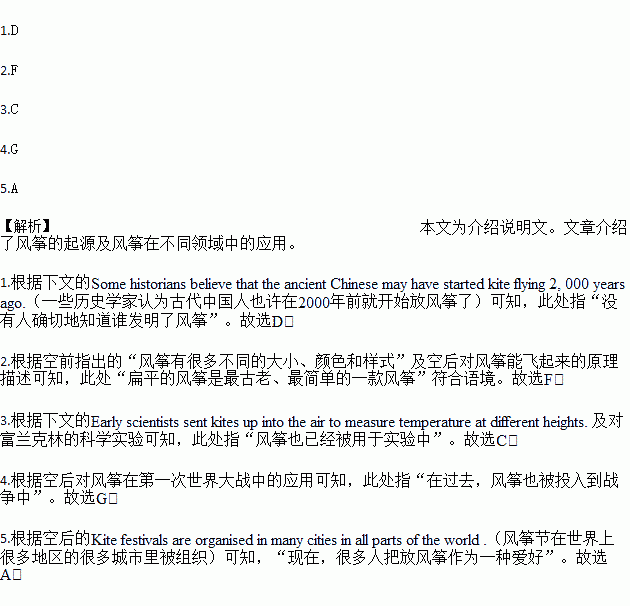题目内容
People have been making and flying kites for about 2, 000 years. 1. Some historians believe that the ancient Chinese may have started kite flying 2, 000 years ago. It is still a popular hobby in China, Japan and South Korea and in other countries of the Far East where beautifully decorated kites appear in different colours. In China there is even a special Kite Day on which children and adults fly kites. In Japan, families fly fish kites on Children’s Day.
Kites are made in many different sizes, colours and shapes. 2. It flies because air flows over and under the kite’s wing. The pressure under the wing helps the kite lift into the air.
3. Early scientists sent kites up into the air to measure temperature at different heights. In 1752, Benjamin Franklin used a kite to prove that lightning was a form of electricity. He attached a metal key to the string of a kite. When lightning hit the kite, electricity passed down the string and Franklin got an electric shock. It was a very dangerous experiment that you shouldn’t copy.
Kites were also used to develop airplanes. The Wright Brothers experimented with kites before they flew the first airplane. 4. In World War I the Germans developed a large kite that could transport people to a submarine (underwater ship). Kites were also used to carry radio signals over long distances.
5. Kite festivals are organised in many cities in all parts of the world.
A. Today most people fly kites as a hobby.
B. Kites are usually made by paper or cloth.
C. Kites have also been used in experiments.
D. No one knows for sure who invented the kite.
E. The name comes from a graceful bird called kite.
F. A flat kite is the oldest and simplest type of kite.
G. In the past kites were used to take part in wars.

